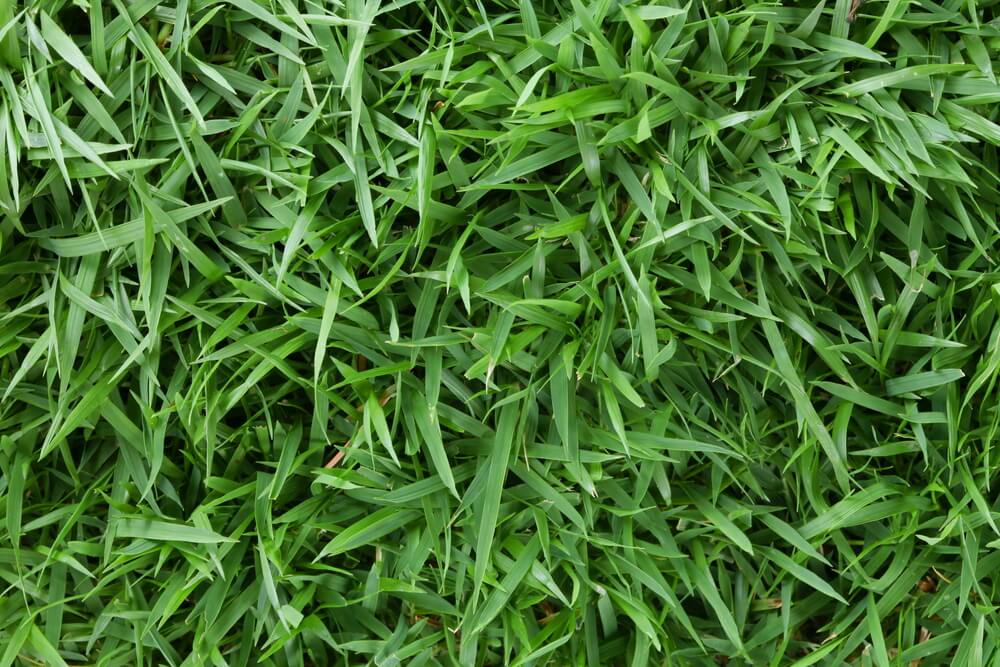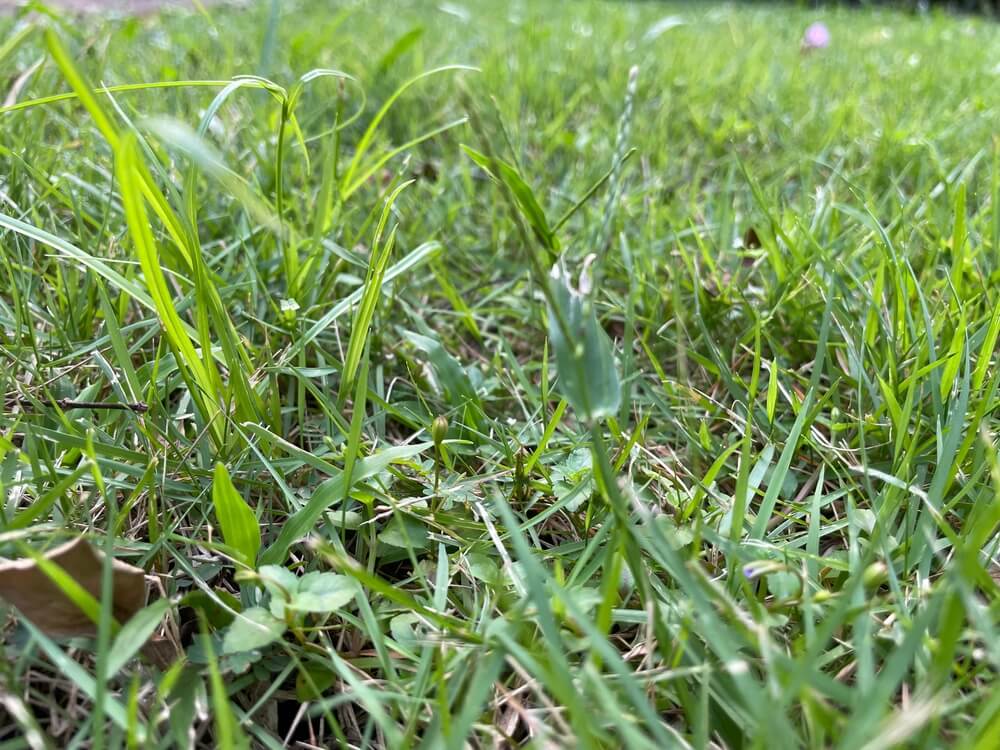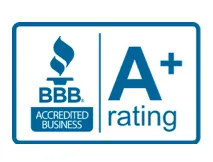We’ve all faced the frustrating invasion of weeds in Zoysia lawn that turn into a battleground of unwanted vegetation. Maintaining your Zoysia’s dominance isn’t just about reactive treatments—it’s about creating conditions where your turf naturally suppresses competitors. By strategically combining proper mowing height, irrigation techniques, and timely applications, you’ll establish a defense system that makes weed infiltration nearly impossible. Let’s examine the five critical practices that make Zoysia an impenetrable fortress.

Key Points on Weeds in Zoysia Lawn
- Maintain Zoysia grass height between 1-2 inches, creating a natural weed defense system through denser growth.
- Water deeply but infrequently to promote extensive root development that outcompetes shallow-rooted weeds.
- Apply pre-emergent herbicides when soil temperatures reach 55°F to prevent weed seed germination.
- Implement strategic fertilization in late spring and late summer using slow-release formulas.
- Alternate mowing patterns and perform annual core aeration to prevent soil compaction where weeds thrive.
Proper Mowing Techniques for Weed Suppression
The ideal mowing height for Zoysia grass serves as a foundational defense against weed encroachment. We recommend maintaining your Zoysia between 1-2 inches tall, with the specific height varying by cultivar.
Proper Zoysia mowing height creates a natural defense system against weeds—keep it between 1-2 inches for optimal protection.
Higher cutting within this range creates deeper root systems that outcompete emerging weeds for nutrients.
Never remove more than one-third of the leaf blade in a single mowing session—this prevents stress that weakens your lawn’s natural weed resistance. During peak growing seasons, we’ll need to mow weekly, while reducing frequency during dormant periods.
Consider alternating mowing patterns each session to prevent soil compaction and grass leaning. Sharp blades are essential; dull blades tear rather than cut, creating entry points for pathogens and weakening your turf’s competitive edge against invasive species.
Zoysia’s natural weed tolerance makes it an excellent choice for homeowners seeking low-maintenance lawn solutions.
Strategic Watering Practices to Strengthen Zoysia’s Defenses
Proper watering protocols constitute perhaps the most critical factor in to keep weeds in zoysia lawn suppressed.
We’ve observed that deep, infrequent irrigation sessions foster extensive root development, enabling your Zoysia to outcompete shallow-rooted weed species for available soil moisture.
When implementing your hydration strategy, consider:
- Water to a soil depth of 4-6 inches (approximately 1 inch of surface water) to encourage downward root exploration
- Maintain morning irrigation schedules (5-9 AM) to minimize evaporation loss and fungal proliferation
- Reduce frequency to 1-2 weekly sessions during active growth periods, allowing soil to partially dry between applications
- Implement seasonal adjustments—decrease to 30-50% of summer rates during dormancy periods
This regimen creates drought-resistant turf while simultaneously disadvantaging opportunistic weed species that typically require consistent surface moisture for germination and establishment. Utilizing a soil moisture meter can help you accurately determine when your Zoysia lawn truly needs water rather than following a rigid schedule.
Season-Specific Fertilization to Outcompete Weeds
While strategic irrigation establishes foundational defense against weed intrusion, precisely timed fertilization completes Zoysia’s competitive advantage in the battle for soil resources. We’ll apply nitrogen at 1-2 pounds per 1,000 square feet, split between two key application windows: late spring (May) when Zoysia exits dormancy and late summer (August) when root development accelerates. Regular application of slow-release fertilizers helps maintain consistent nutrient levels while requiring fewer applications throughout the growing season.
Pre-Emergent and Post-Emergent Herbicide Applications
When Zoysia’s natural defenses require reinforcement, strategic herbicide applications become essential components in our thorough weed management protocol.
We distinguish between pre-emergent compounds, applied before weed seeds germinate, and post-emergent formulations that target established invaders.
Proper timing maximizes efficacy while minimizing stress on your Zoysia cultivar.
- Apply prodiamine or dithiopyr pre-emergents when soil temperatures reach 55°F in spring
- Select sulfentrazone-based post-emergents for sedge control during summer months
- Utilize mesotrione selectively for broadleaf control without risking Zoysia damage
- Implement spot-treatment protocols with quinclorac for persistent crabgrass infestations
Our community of Zoysia enthusiasts understands that chemical intervention requires precision.
We recommend calibrated sprayer equipment and adherence to label-specified application rates to maintain both weed suppression and turf vigor. For optimal results, always read and follow safe use instructions on herbicide packaging to ensure effective weed control while protecting your lawn and the environment.
Cultural Practices for Long-Term Weed Management
Beyond chemical interventions, sustainable Zoysia weed management depends on systematic cultural practices that create conditions where desirable turf thrives and invaders struggle.
We’ve found that maintaining proper mowing height (1.5-2 inches) promotes lateral growth and canopy density that naturally suppresses weed germination.
Strategic mowing at 1.5-2 inches cultivates dense Zoysia growth that naturally outcompetes weeds.
To achieve the best results, implement deep, infrequent irrigation—approximately 1 inch weekly—which encourages deep Zoysia root development while disadvantaging shallow-rooted weeds.
Annual core aeration reduces compaction and thatch accumulation, creating ideal soil conditions for Zoysia’s rhizomatous growth.
We complement this with seasonal fertilization timed to Zoysia’s growth cycle (primarily summer months), typically applying nitrogen at 2-3 pounds per 1,000 square feet annually.
These practices collectively establish Zoysia’s competitive advantage in your lawn ecosystem.
Regular monitoring for brown patch disease and other fungal problems will prevent weakened turf areas where weeds can easily establish.
Frequently Asked Questions
How Do I Identify Common Weeds That Specifically Target Zoysia Grass?
To identify weeds targeting zoysia, we’ll scrutinize for crabgrass, dandelions, nutsedge, and clover. They’re distinguished by leaf patterns, growth habits, and root structures that contrast with zoysia’s uniform appearance.
Can Overseeding Thin Areas of Zoysia Help Prevent Weed Invasion?
We’ll achieve success overseeding thin zoysia patches. It’s critical to maintain density of 1-2 plugs per square foot, preventing weed colonization in vulnerable bare areas where competition is minimal.
Will Dethatching My Zoysia Lawn Reduce Weed Problems?
We’ll see improved weed control through dethatching as it eliminates organic buildup where weed seeds germinate. This maintenance practice enhances our zoysia’s density, limiting space for unwanted invaders to establish.
Are There Organic Weed Control Options Safe for Pets on Zoysia?
We’ve found several pet-safe organic options for your zoysia: corn gluten meal as pre-emergent, vinegar-based herbicides for spot treatments, and manual removal tools like weed twisters that minimize chemical exposure altogether.
How Do Soil Ph Levels Affect Weed Growth in Zoysia Lawns?
We’ve found zoysia thrives at pH 6.0-6.5, while weeds often prefer more acidic or alkaline conditions. When we maintain ideal pH, we’re strengthening zoysia’s competitive edge against our common invasive species.
Takeaway
We’ve outlined critical Zoysia weed management protocols that maximize competitive advantage against invasive species. By implementing proper mowing height (1-2″), establishing deep irrigation regimens, applying seasonally-appropriate fertilization, and utilizing strategic pre/post-emergent herbicide applications, we’re creating conditions inhospitable to weed establishment. These interventions, combined with mechanical practices like aeration, create a self-sustaining system where Zoysia’s natural allelopathic properties and dense growth habit effectively suppress potential weed incursions.




